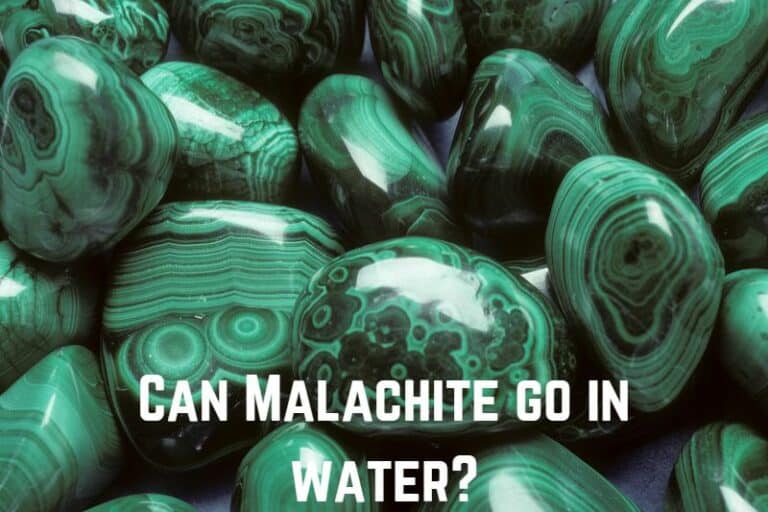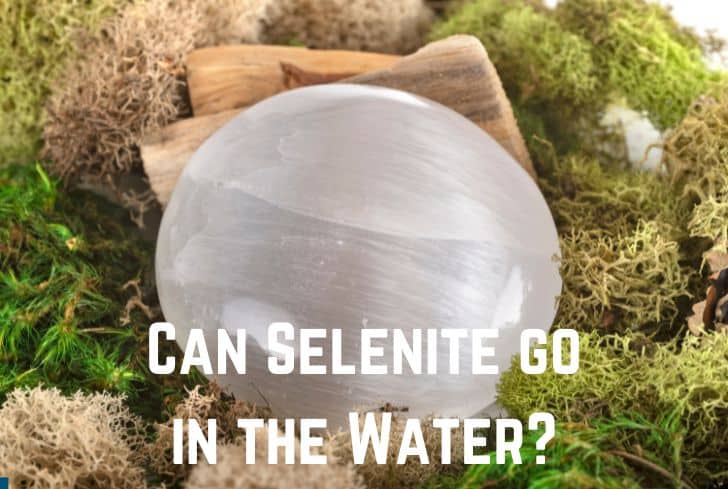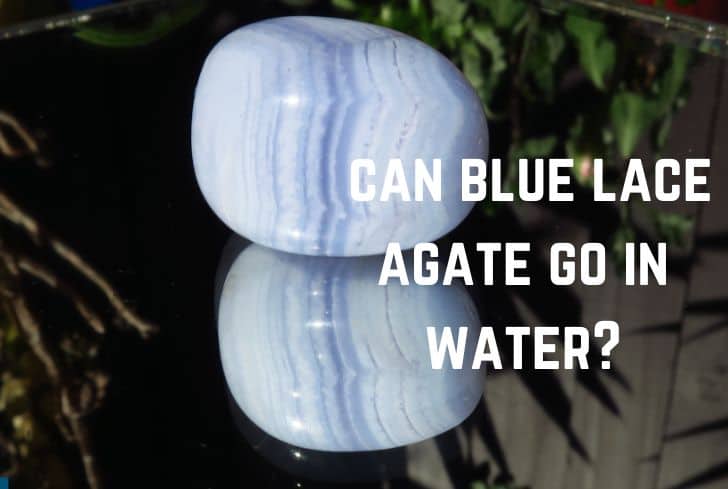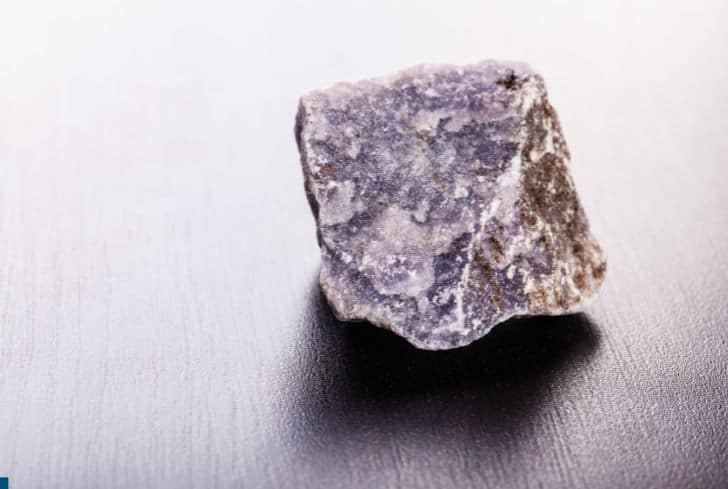Can Calcite Go in the Water? (And in Salt?)

Calcite is the most stable polymorph of Calcium Carbonate (CaCO3). It is a common mineral found in all types of rocks around the world. Calcite is the principal constituent of limestone and marble, used widely in the construction industry. It is also used in soil treatment, optical instruments, gemstones, etc.
Have you ever wondered if calcite can go in the water? In this article, we are going to discuss just that. We will begin with the properties of calcite. Then we will look at its different variants, examining how they interact with water and salt. Finally, we will learn about cleaning calcite.
Is Calcite Water Safe?
No, calcite is not water safe. It has a value of 3 on the Mohs Hardness scale, which is lower than the minimum value of 5.0, required for minerals to survive underwater. As such, it should not be put into water. Otherwise, the water can dull its surface, damage its structure, or dissolve it completely.
Mohs Hardness Scale is a measure of the relative resistance of a mineral to scratching. Besides that, it also gives an estimate of a mineral’s relationship to water. Usually, a value above 5.0 means that the mineral can be safely put in water.
Since Calcite’s value is 3.0, it should not be immersed in water. Soft stones like selenite can dissolve completely when in water for a long time. Even harder stones, with a value above 5.0 on the Mohs Scale, should be put in water for extended periods.
Water enters the tiny crevices of stones and expands them. These fissures may not be apparent at first, but they can slowly damage the structure of the stone. The stone can become more brittle and can break easily upon impact.
Water also tarnishes the appearance of the stone. Upon repeated exposure, it can strip off the polish of stones, making them lose their glow. By encouraging fissures, water can also adversely affect the optical properties of stones, further damaging their look.
What are the Properties of Calcite?
These are the properties of calcite:
1. Appearance: Calcite is usually a white mineral but can also be colourless, red, green, blue, or yellow. It has a white streak (the colour of a mineral in its powdered form) and a vitreous lustre. It ranges from opaque to translucent.
2. Structure: Calcite has over 1000 crystallographic forms. Usually, calcite has perfect rhombohedral (planes do not intersect at 90° angle) cleavage in three directions. It has a trigonal crystal system and twinning is quite common.
3. Hardness: Calcite has a hardness of 3 on the Mohs Scale. It is not safe in the water and can be easily scratched by other surfaces. Because of its perfect cleavage in 3 directions, it is also quite hard to cut calcite.
4. Composition: Calcite is a common constituent of sedimentary rocks (formed by the accumulation of organic particles), especially limestone, formed by the shells of dead marine organisms. Calcite is the primary mineral in metamorphic marble. It also occurs in hot springs, caverns, and volcanic rocks.
5. Optical Properties: Calcite ranges from opaque to transparent, and often exhibits different optical effects. For example, single calcite crystals exhibit birefringence (double refraction), through which objects viewed through the crystal appear doubled.
Can Orange Calcite go in the Water?
No, orange calcite should not be put into water. Calcite is a relatively soft mineral, having a value of 3 on the Mohs Hardness Scale, which is lower than the minimum value required for minerals to be safe underwater.
For soft minerals, water can be particularly damaging, and it can even completely dissolve the crystal. Even for harder minerals, water can dull the surface of the stones or damage their structure.
Not just water but even salt is dangerous for orange calcite. Its abrasive qualities will harm the stone, so you shouldn’t use this popular recharging method. Instead, you can recharge your orange calcite by submerging it in a bowl of brown rice for 48 hours. You can also pass it through the smoke of burning sage.
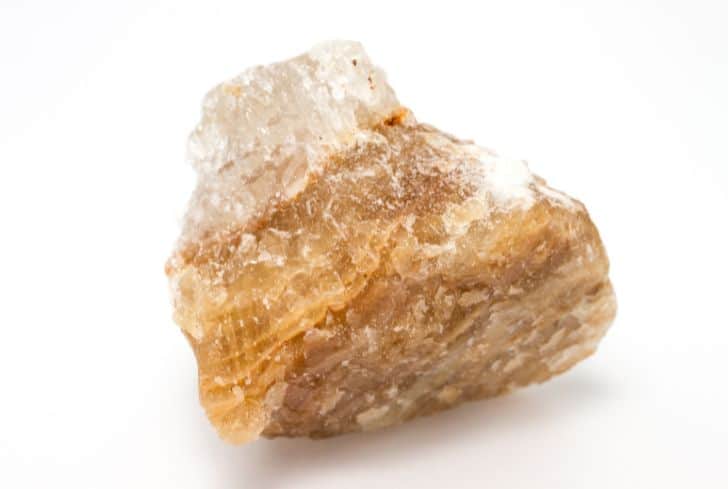
Can Honey Calcite go in the Water?
No, honey calcite should not be put in water. Like all variants of calcite, it has a value of 3.0 on the Mohs Hardness Scale. This means that it is not safe to be immersed, and water can dull its surface, damage its structure, or even completely dissolve it.
Honey calcite, also known as Golden or Amber calcite, is a gold/brown variant that is commonly found in Mexico. It is considered a powerful spiritual cleanser that amplifies the vibrations of other gemstones. It is said to eliminate toxic frequencies and help treat psychological illnesses.
Honey calcite is a delicate stone that should not be put into water. Instead, to clean the stone, you can put it under running water for a few seconds and then wipe it with a damp cloth.
Can Blue Calcite go in the Water?
No, blue calcite should not be put into water. It has a value of 3.0 on the Mohs Hardness Scale, meaning that it is a relatively soft mineral that should not be immersed in water. Besides water, it is also prone to get damaged by other hard surfaces, so it needs to be handled with care.
Although calcites are one of the most abundant minerals on the planet, blue calcite is only found in a few places, namely South Africa and Mexico. The stone is said to be soothing to the emotional body and provides mental protection.
Like all variants, blue calcite should not be put into water. Other than that, soft minerals like these need to be handled carefully in everyday use too. They should be put separate from other hard crystals as they can scratch them. You should also remove such jewelry before physical activities.
Can Green Calcite go in the Water?
No, green calcite, like all variants of calcite, should not be put into water. It has a value of 3.0 on the Mohs Hardness Scale, meaning that is quite prone to scratches and should also not be put into water. Water can dull its surface, damage its structure, or dissolve it.
During crystallization, some calcite stones retain chloride compounds, which leads to this green variant of calcite. This stone occurs in massive forms, and it is usually found in Mexico and Brazil. It is said to bring positive changes in a person’s holistic development.
Green calcite should not be put into the water because water can enter the crevices of the stone, widen them, and thus damage its structure. Water can also strip off the polish of the stones, ruining their appearance. Finally, soft minerals like calcite can even fully dissolve in water.
Can Calcite Go in Salt?
No, calcite should not be put into salt. Putting crystals in a bed of dry salt is a common way of recharging them, but it is not appropriate for all crystals. Calcite has a value of 3.0 on the Mohs Hardness Scale, meaning that it is a relatively soft mineral, and it can get harmed by salt.
Not all stones are safe to put into salt. Some porous stones can allow the salt to penetrate their crevices, which will expand because of the particles, and this can damage the structure of the stone.
Sometimes, crystals can chemically react with the salt, causing damage to your stone. Salt can also sometimes tarnish the color of the crystals. When salt is dissolved in water, it is even more dangerous, as it can penetrate crevices even more easily and create fissures. Salt water also hastens the process of rusting.
Calcite’s hardness is not much higher than the value of salt (2.0-2.5), so it can get scratched by its particles. Several similar crystals cannot go in salt like selenite, halite, etc., and for these crystals, it is better to use other methods like smoke for cleansing.
How to Cleanse Calcite?
Some people suggest that vinegar can be used to clean calcite. We, however, do not recommend this method. Calcite is quite a soft mineral, and vinegar can dissolve it.
Although it is not recommended to soak calcite in water for long periods, it can still be cleaned through water if done properly. Here are the steps you need to follow:
- Mix a mild detergent with warm water.
- Soak the crystal in the solution for a few minutes, and clean the surface with a soft brush.
- Rinse the crystal under running water, removing any excess soap.
- Let it air dry. Turn it around a few times to get rid of any water in the crevices.
Sometimes, a detergent-water solution may not be enough to clean the crystal completely. This is especially true when you are dealing with algae deposits or other organic matter. In such cases, you can use water diluted bleach.
For brown/red iron stains, you can try using Iron OUT. You can quickly soak your crystals in water before and after soaking them into Iron OUT, as this will prevent any residue from accumulating in the crystal.
Conclusion
In this article, we have discussed calcite’s interaction with water. Given its relatively low hardness of 3.0 on the Mohs Scale, calcite should not be immersed in water, as it can be damaging to the stone. We looked at the properties of Calcite, and the relationship of its variants to different elements. Finally, we talked about cleaning calcite.

